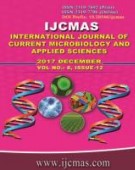


 National Academy of Agricultural Sciences (NAAS)
National Academy of Agricultural Sciences (NAAS)

|
PRINT ISSN : 2319-7692
Online ISSN : 2319-7706 Issues : 12 per year Publisher : Excellent Publishers Email : editorijcmas@gmail.com / submit@ijcmas.com Editor-in-chief: Dr.M.Prakash Index Copernicus ICV 2018: 95.39 NAAS RATING 2020: 5.38 |
Maintenance of native soil fertility in the intensively cultivated regions of the country is one of the preconditions of maintaining and improving the current crop yield levels. Intensive cropping systems remove substantial quantities of plant nutrients from soil during continued agricultural production round the year. The basic principle of maintaining the fertility status of a soil under high intensity crop production systems is to annually replenish those nutrients that are removed from the field. Indeed this becomes more relevant in the absence of the measures for adequate replenishment of the depleted nutrient pools through the removal of crop residues from agricultural fields (Sanyal, 2014). Nutrient mining causes a decline in the native soil fertility and may seriously jeopardize future food security of the country. Unfortunately, the concern for nutrient mining in Indian soils is largely limited to the scientific community and has not been integrated adequately with the crop production practices. One would use the term “Nutrient Mining” when the quantity of soil nutrients removed by a crop from an agricultural field exceeds the amount of the nutrient that is recycled back and/ or replenished to the field.
 |
 |
 |
 |
 |